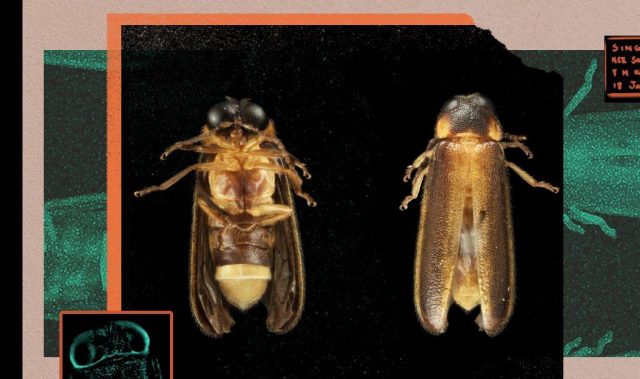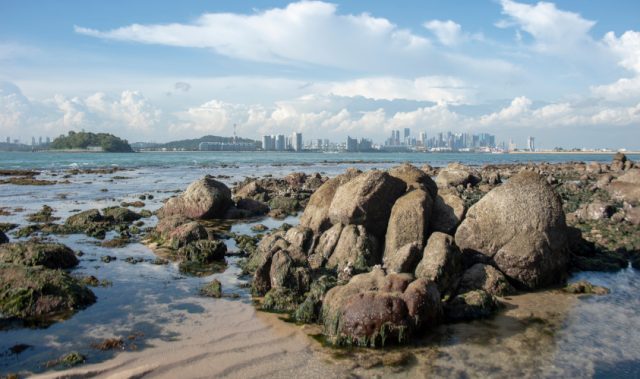
AsianScientist (Sep. 25, 2015) – The untimely demise of any animal is undeniably sad. But at the same time, having a dead whale wash up on your doorstep also presents a rare opportunity for studying a truly majestic creature.
When the carcass of a female sperm whale was discovered floating off the coast of Jurong Island in July, staff at Singapore’s Lee Kong Chian Natural History Museum immediately recognized its value for research and education. But how do you deal with a golden opportunity the size of a bus, that also happens to be rotting fast in the tropical heat?
“In general, we are well equipped to deal with carcass recoveries for animals such as pangolins, civets and birds,” said Marcus Chua, curator at the museum. “But this whale was at least a thousand times bigger than what we are used to!”
The museum wasted no time in contacting whale experts around the world for advice on how to salvage, dissect and preserve the 10.6-meter-long carcass, which they estimated weighed between eight and ten tons.
“Over the next few days of operations, we relied on these pieces of advice, adapting what we learnt from carcass salvage in the past, as well as a great deal of common sense,” said Chua.
Taking it step by step
Whale carcasses are notorious for their propensity to explode—great for YouTube views, but not so much for public safety. Methane and other gases produced during bacterial decomposition can build up to high pressures in the whale’s gut, essentially turning it into a huge blubbery bomb. To prevent this, the team first hammered metal tubes into the gut to release the pressure in a controlled manner.
Starting from the belly and working towards the head, they then used knives and meat hooks to strip the flesh off the carcass, so that the skeleton could be preserved for display. To guard against injuries, those who were new to the job first watched more experienced members handling the dissecting equipment before they were allowed to wield it, under supervision. Once most of the flesh had been removed, blanching with hot water helped remove any smaller bits that remained stuck to the bones.
“The blubber was extremely tough, up to 15 cm in some parts—a real challenge and a workout,” said Chua. “It was really a smelly and messy job.”
In addition to the skeleton, the team also collected tissue samples from the skin and internal organs such as the stomach, heart, lungs and intestines for genetic and toxicology studies.
Since they were handling blood and fluids from the decomposing animal, everyone made sure to suit up in coveralls, boots, gloves, N95 masks and protective goggles. To prevent dehydration—this doesn’t sound like the most comfortable getup for working under the blazing sun—they worked in shifts lasting 60-90 minutes, with 30 minutes’ rest in between.
Singapore’s first sperm whale
The Singapore Whale, as she has come to be called, was found with a huge gash along her posterior half—possibly the result of a collision with a ship’s propellor, which might have caused her death. Along with squid beaks (sperm whales are the planet’s largest carnivores and are known to dive to great depths to hunt giant squid), plastic debris was also found among the contents of her stomach, an indication of environmental pollution.
Importantly, this is the first record of a sperm whale in Singapore’s territorial waters, and may also be the first confirmed record of the species in the waters of Peninsular Malaysia. This suggests that although the whales are not resident to the region, the waters may form part of their migratory route.
Further research into potential threats to the species’ survival, as well as its hunting and movement patterns, could help inform conservation measures. Sperm whales were hunted for centuries for their blubber, oils and ivory-like teeth; today commercial whaling has ceased, but the species is still considered vulnerable to extinction.
The museum is now planning an exhibit around the Singapore Whale, and has issued a call for donations to support this effort. So if, at some point in the future, you find yourself standing in the museum under the arch of the whale’s giant ribcage, do spare a thought for the team that braved heat, odor and a potential hailstorm of whale innards to make it possible.
This article is from a monthly column called The Bug Report. Click here to see the other articles in this series.
———
Copyright: Asian Scientist Magazine; Photo: Marcus Chua/Lee Kong Chian Natural History Museum.
Disclaimer: This article does not necessarily reflect the views of AsianScientist or its staff.













